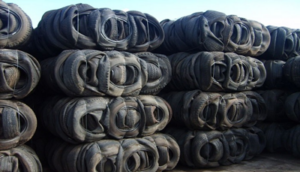Researchers show how synthetic rubber raw material can be degraded
Wittenberg, Germany – Researchers at Martin Luther-University Halle-Wittenberg (MLU) and the Leibniz Institute of Plant Biochemistry (IPB) have created and exploited enzymes that are capable of degrading synthetic polyisoprene. Polyisoprene is the principal component of natural rubber and of many types of rubber also used in car tires, for example. Up until now, it has only been possible to degrade polyisoprene, with a composition similar to naturally occurring rubber. The present research could provide important insights toward a circular economy. The study appeared in the journal Green Chemistry.
Natural rubber is used to make polyisoprene, which in turn enables the production of many types of rubbers and plastics. Polyisoprene is a long-chain molecule formed by linking hundreds or thousands of smaller isoprene molecules. “Various bacteria are able to degrade natural polyisoprene with the help of enzymes,” says MLU chemist Vico Adjedje. Enzymes are biomolecules that make chemical reactions possible in all living organisms—from simple single-celled organisms to humans. Since global demand for rubber products is greater than can be satisfied by existing stocks of natural rubber, the starting material is mainly produced by chemical synthesis. Natural and synthetic variants have similar properties but exhibit a number of differences in the structure of the molecules of which they are composed.
The research teams of Prof. Dr. Wolfgang Binder at MLU and Jun.-Prof. Dr. Martin Weissenborn at IPB and MLU have now found a way to decompose artificially produced polyisoprene using the enzyme LCPK30. “We are the first to have succeeded in getting the polyisoprene into a form that the enzyme can also work with,” says Binder. In doing so, the researchers took inspiration from nature: “Our assumption was that synthetic polyisoprene should be present in an emulsion so that the enzyme can work properly,” Adjedje says.
Milk, which consists largely of water and fat, provides a typical example of an emulsion. It forms globules a few micrometers in size, and its fine distribution in water lets the milk seem cloudy. Just like fat, polyisoprene is virtually insoluble in water. Nature nevertheless manages to distribute it evenly in water: as milky-white latex milk, which is harvested on rubber plantations and processed into natural rubber. Inspired by this latex milk, the researchers succeeded in distributing synthetically produced polyisoprene evenly in water, using a specific solvent. The enzyme complied with the artificial emulsion and thus remained intact over the reaction time, breaking down the long molecular chains of the polyisoprene into much smaller fragments.
The researchers’ goal is to be able to break down other similar substances from car tires in the future. “A lot happens to the starting material before it becomes a finished tire: the molecule chains are chemically cross-linked to change the mechanical properties. Plasticizers and antioxidants are added. The latter in particular present a problem for the enzyme because they attack its structure,” says Adjedje. The results also provide important impetus toward a recycling economy. “We could further process the degradation products into fine chemicals and fragrances—or reproduce new plastics,” explains Binder. The researchers used LCPK30 as it occurs in nature. Weissenborn’s research team is currently working on optimizing the enzyme so that it becomes less sensitive to solvents and triggers further reactions.

